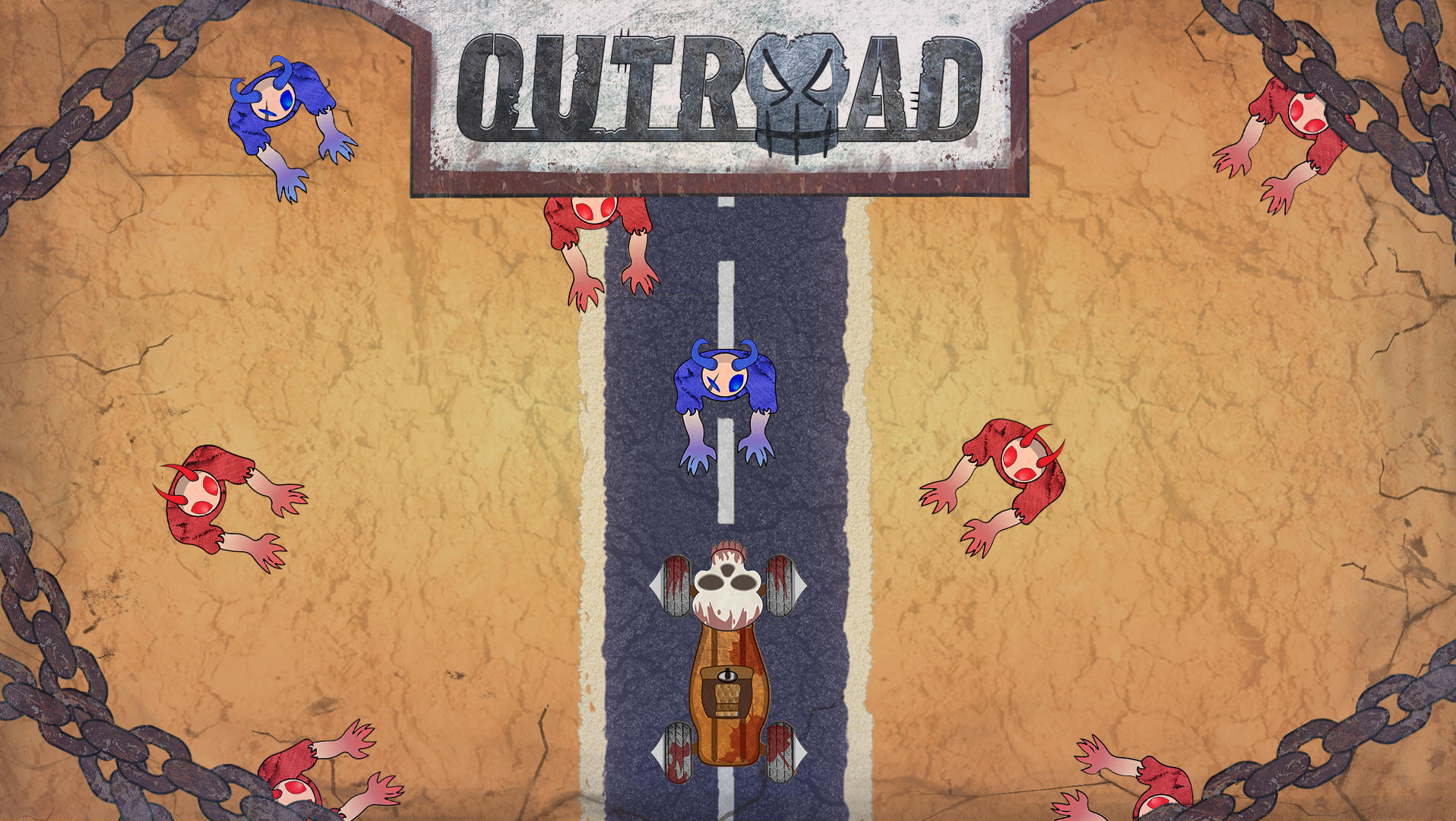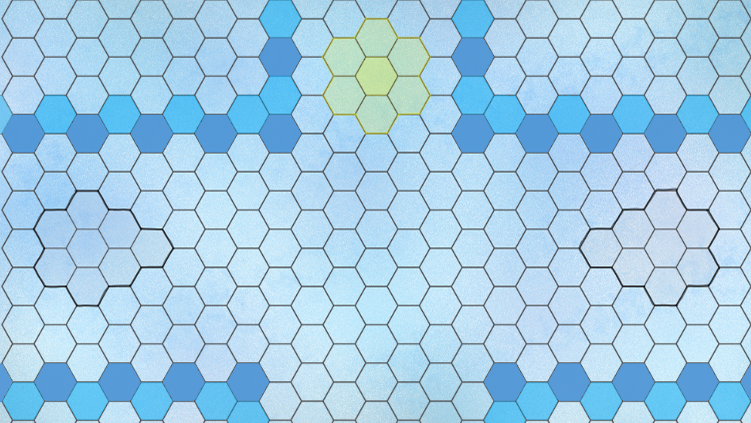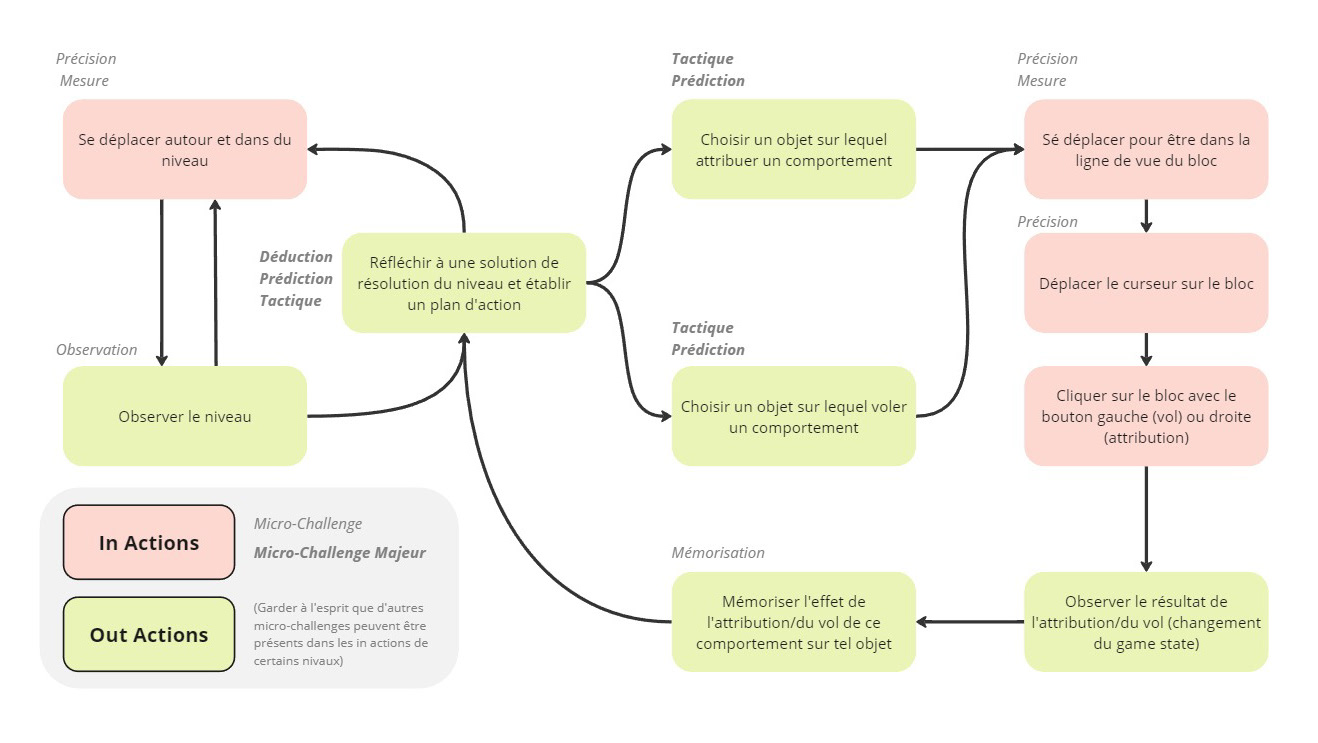Sidh is a 3D Puzzle Plateformer where the player takes on the role of Scott, a little mouse who wanders through a gigantic cavern containing the ruins of an ancient civilization, whose mysteries she is trying to unravel. She possesses a magical power that enables her to create clones of herself, which reproduce her past actions in a loop, helping her solve the game's complex puzzles.
Skills
•Level Design / Puzzle Design
•Game Design
•Programming
•Game Design
•Programming
Core Mechanic
Scott has the power to record his own actions on magic stones. After recording his actions and movements on one of the stones he owns, they are replayed in a loop by a magical clone of Scott.
In the diagram on the right, the player presses the record button and then moves to the top of the structure..
Players record their actions by pressing the right trigger on their controler. Then, by pressing it again, they end the recording and automatically launch the clone, which reproduces the actions recorded in the loop.
In the diagram on the right, the player presses the record button a second time, and a clone launches behind him, reproducing the action he has just performed and moving to the top of the structure.
For example, in this tutorial, the player has to go through a door that opens when the pressure plate in the room is pressed. However, the player doesn't have time to go through the door after activating the plate, as it closes too quickly when there's nothing on the plate.
The player therefore has to record himself staying on the pressure plate, so that his clone keeps the door open while he goes through the door.
The player can collect up to 3 magic stones, and therefore use up to 3 clones in each level. The more clones needed to complete a level, the harder it is to finish.
In this gameplay video, the player discovers that his clones can also be used in a tangible way, as he can mount on them, using them as promontories to jump higher.
In this gameplay video, the player discovers that his clones can also be used in a tangible way, as he can mount on them, using them as promontories to jump higher.
Finally, it is quite possible for a single clone to perform several complex actions during its recording sequence, as in this second level tutorial
Here, the player must both use his clone to jump high enough to reach the door, and leave it on a pressure plate so that the door remains open once the player is in front of it.
Role in the Project
As Game Designer and Level Designer, I was able to design the majority of Sidh's levels and adapt the puzzle elements we had designed to the needs of the game.
In total, I created around ten puzzles ranging from simple to very difficult.
I also designed and programmed the Level Design elements (Pressure Plate, Door, Ball/Cube Spawner, Elevator and Button).
In total, I created around ten puzzles ranging from simple to very difficult.
I also designed and programmed the Level Design elements (Pressure Plate, Door, Ball/Cube Spawner, Elevator and Button).
Level Breakdown
The "Sealed" level is a medium-difficulty puzzle that requires 2 clones to solve. It presents Synchronisation and Accuracy challenges, and tests the player's ability to restrict movement from one room to another when trying to solve the level.
For example, the pressure plate on the right opens one door, but closes another at the same time: the player must therefore place a clone on it which alternates regularly between activation and deactivation, to always have access to the different rooms.


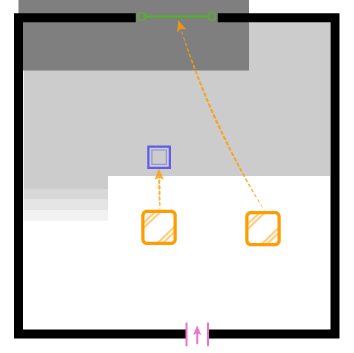
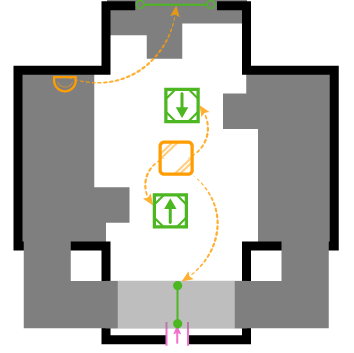
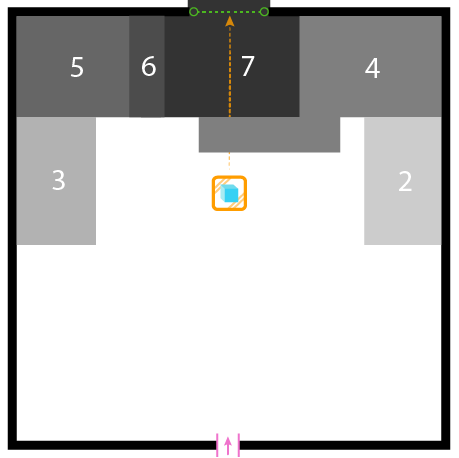
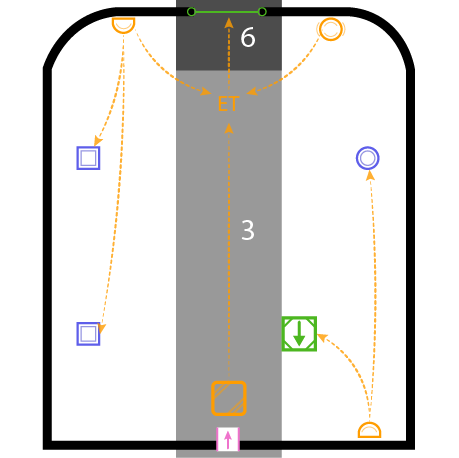
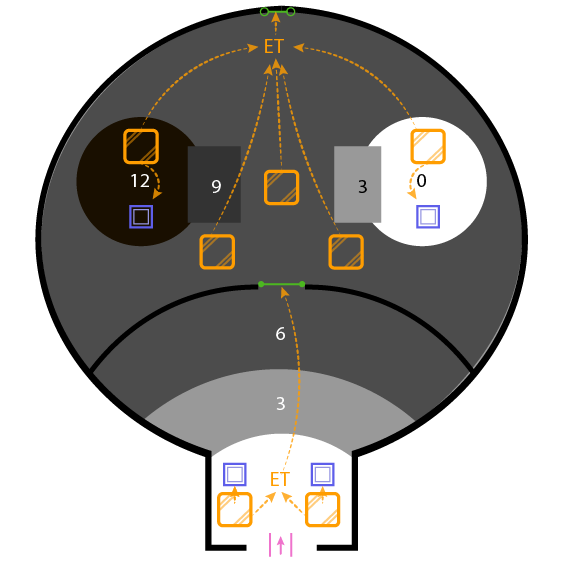

Level Design Documentation
The Level Design part of Sidh's GDD. In it, I explain my level design intentions, my reference games, the design of the levels, the distribution of difficulty and the order in which the game mechanics are learned.



